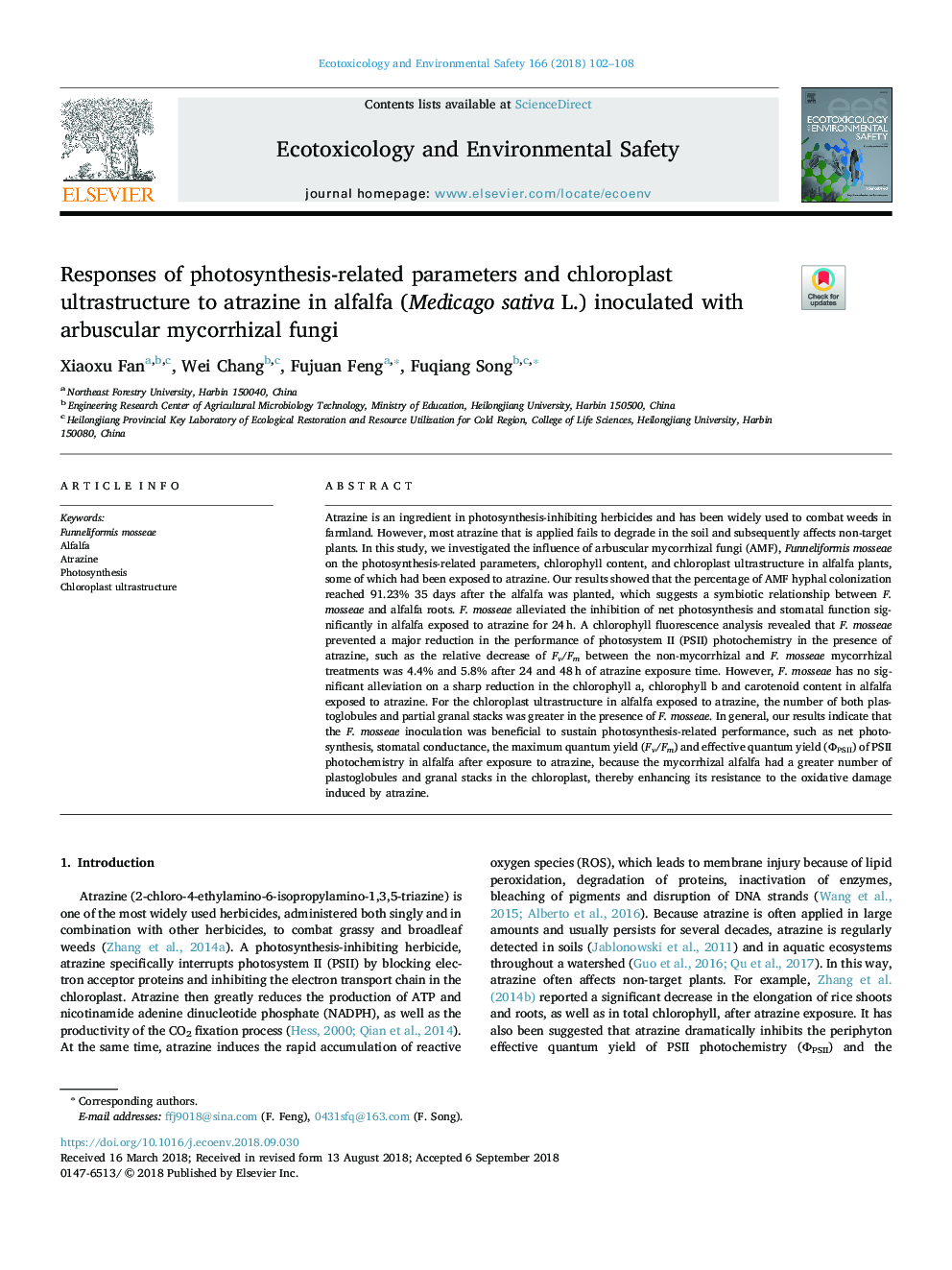| کد مقاله | کد نشریه | سال انتشار | مقاله انگلیسی | نسخه تمام متن |
|---|---|---|---|---|
| 11025086 | 1701029 | 2018 | 7 صفحه PDF | دانلود رایگان |
عنوان انگلیسی مقاله ISI
Responses of photosynthesis-related parameters and chloroplast ultrastructure to atrazine in alfalfa (Medicago sativa L.) inoculated with arbuscular mycorrhizal fungi
دانلود مقاله + سفارش ترجمه
دانلود مقاله ISI انگلیسی
رایگان برای ایرانیان
کلمات کلیدی
موضوعات مرتبط
علوم زیستی و بیوفناوری
علوم محیط زیست
شیمی زیست محیطی
پیش نمایش صفحه اول مقاله

چکیده انگلیسی
Atrazine is an ingredient in photosynthesis-inhibiting herbicides and has been widely used to combat weeds in farmland. However, most atrazine that is applied fails to degrade in the soil and subsequently affects non-target plants. In this study, we investigated the influence of arbuscular mycorrhizal fungi (AMF), Funneliformis mosseae on the photosynthesis-related parameters, chlorophyll content, and chloroplast ultrastructure in alfalfa plants, some of which had been exposed to atrazine. Our results showed that the percentage of AMF hyphal colonization reached 91.23% 35 days after the alfalfa was planted, which suggests a symbiotic relationship between F. mosseae and alfalfa roots. F. mosseae alleviated the inhibition of net photosynthesis and stomatal function significantly in alfalfa exposed to atrazine for 24â¯h. A chlorophyll fluorescence analysis revealed that F. mosseae prevented a major reduction in the performance of photosystem II (PSII) photochemistry in the presence of atrazine, such as the relative decrease of Fv/Fm between the non-mycorrhizal and F. mosseae mycorrhizal treatments was 4.4% and 5.8% after 24 and 48â¯h of atrazine exposure time. However, F. mosseae has no significant alleviation on a sharp reduction in the chlorophyll a, chlorophyll b and carotenoid content in alfalfa exposed to atrazine. For the chloroplast ultrastructure in alfalfa exposed to atrazine, the number of both plastoglobules and partial granal stacks was greater in the presence of F. mosseae. In general, our results indicate that the F. mosseae inoculation was beneficial to sustain photosynthesis-related performance, such as net photosynthesis, stomatal conductance, the maximum quantum yield (Fv/Fm) and effective quantum yield (ΦPSII) of PSII photochemistry in alfalfa after exposure to atrazine, because the mycorrhizal alfalfa had a greater number of plastoglobules and granal stacks in the chloroplast, thereby enhancing its resistance to the oxidative damage induced by atrazine.
ناشر
Database: Elsevier - ScienceDirect (ساینس دایرکت)
Journal: Ecotoxicology and Environmental Safety - Volume 166, 30 December 2018, Pages 102-108
Journal: Ecotoxicology and Environmental Safety - Volume 166, 30 December 2018, Pages 102-108
نویسندگان
Xiaoxu Fan, Wei Chang, Fujuan Feng, Fuqiang Song,